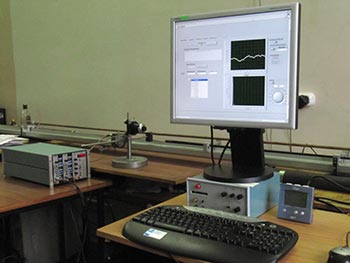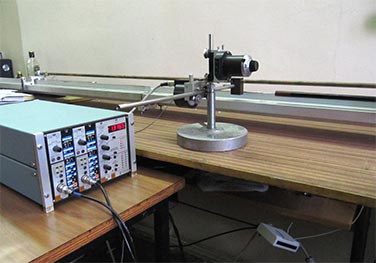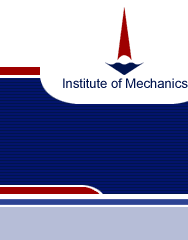 |
 |
|||||||||||||||||||||||||||||||||||
|
Aerodynamic facilities Aerodynamic complex of the laboratory of experimental hydrodynamics consists of several facilities for the investigations of free jets, coaxial jets, flows in various channels and tubes. An air with the pressure of 6 atm. is lined to the complex, which is fitted with the measuring and processing equipment, particle image velocimetry (PIV) system, software in LabView environment.
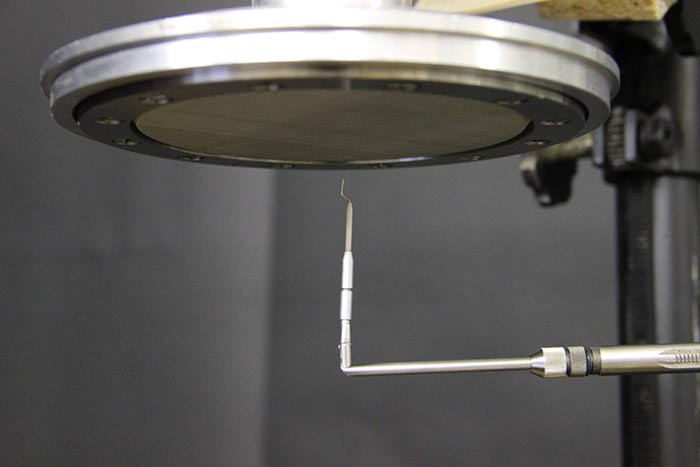
Thermoanemometer probe measuring average velocity and turbulent fluctuation profiles near the diffuser outlet.
In 2016, aerodynamic facilities have been fitted with Polis particle image velocimetry system. The system is based on the methods of digital tracer visualization for the measuring velocity fields in flows. PIV is an optical method of instantaneous velocity fields measuring in fluids. Impulse laser creates thin light sheet and illuminates airborne small light-reflecting particles. Particles locations at the moments of two consecutive laser flashes are registered in two frames of high-speed camera. The flow velocity is calculated by the displacement of the particles in the time interval between two laser flashes. Displacement calculation is based on the application of correlation methods to the tracer images, using regular partition of the testing section to elementary regions. 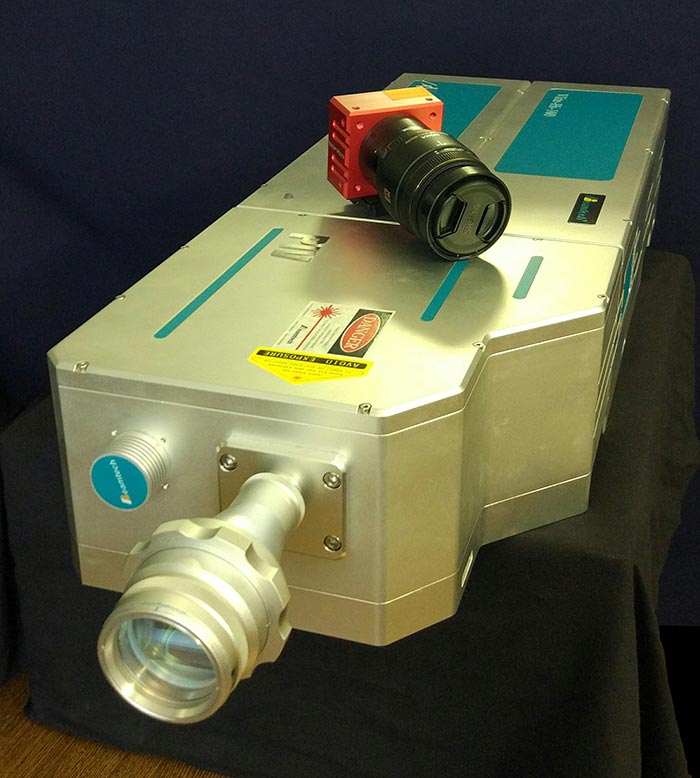
Impulse laser and high-speed camera.
PIV system components:
|
|||||||||||||||||||||||||||||||||||
| Last update: june of 2025 | ||||||||||||||||||||||||||||||||||||


